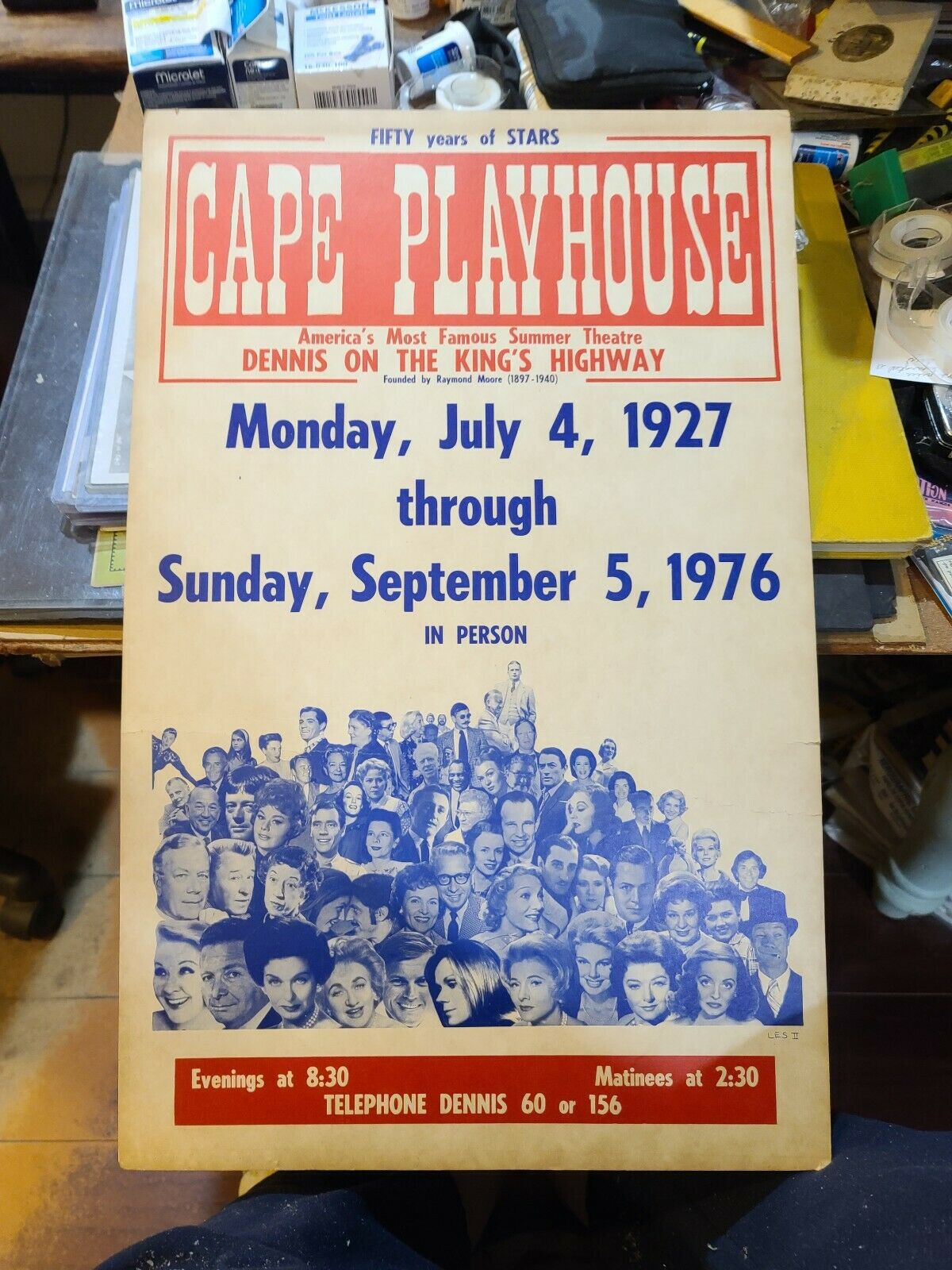-40%
*GEORGE SAND: ACTRESS MAGGIE MITCHELL RARE LARGE 1872 FANCHON PROGRAM*
$ 26.39
- Description
- Size Guide
Description
She was one of the most famous star actresses of her era from the 1850s through the Civil War and onward and was reputed to be a girlfriend of John Wilkes Booth. A rare large original April 1872 Boston Theatre program for Maggie Mitchell in Fanchon, the Cricket, with Maggie Mitchell's Shadow Dance listed prominently. The play was adapted from George Sand's 1849 novel La Petite Fadette. Produced by Jnius Brutus Booth II, the brother of Edwin and John Wilkes Booth. Dimensions ten and a half by seven and three quarters inches. Edgewear and staples at left margin otherwise good. See Maggie Mitchell's extraordinary biography below.Shipping discounts for multiple purchases. Credit cards accepted with Paypal. Inquiries always welcome. Please visit my other eBay items for more early theatre and historical autographs, photographs and programs and great singer, actor and actress cabinet photos and CDV's.
From Wikipedia:
Margaret Julia Mitchell (popularly known as Maggie Mitchell) (1832–1918) was an American actress, born in New York.[1] She made her first regular appearance as Julia in The Soldier's Daughter at the Chambers Street Theatre in 1851. The parts in which she was best liked were Jane Eyre, Mignon, Little Barefoot, and Fanchon the Cricket. An early marriage in the 1850s produced her son Julian Mitchell. She was married to her second husband Henry Paddock, her manager, in 1868, and they had two children Fanchon and Harry M. Paddock. They divorced twenty years later and she was wed to Charles Abbott, and retired from the stage to live in New York. Notably she was the mother of Julian P. Mitchell, a musical comedy director who directed the 1903 Broadway production of L. Frank Baum's The Wizard of Oz and was later associated with Weber & Fields and Florenz Ziegfeld.[2] [3] She performed as a star actress from the 1850s through the 1880s and acted with Edwin Forrest and Edwin and John Wilkes Booth. After her death in 1918 she was buried in Green-Wood cemetery in Brooklyn.
Amantine Lucile Aurore Dupin
[1]
(
French:
[amɑ̃tin lysil oʁɔʁ dypɛ̃]
; 1 July 1804 – 8 June 1876), best known by her
pen name
George Sand
(
French:
[ʒɔʁʒ sɑ̃d]
), was a French novelist, memoirist, and Socialist.
[2]
[3]
One of the most popular writers in Europe in her lifetime,
[4]
being more renowned than both
Victor Hugo
and
Honoré de Balzac
in England in the 1830s and 1840s,
[5]
Sand is recognised as one of the most notable writers of the European Romantic era.
George Sand
[6]
– known to her friends and family as "Aurore" – was born in Paris and was raised for much of her childhood by her grandmother,
Marie-Aurore de Saxe
, Madame Dupin de Francueil, at her grandmother's estate,
Nohant
, in the French province of
Berry
(see
House of George Sand
).
[7]
Sand later used the estate setting in many of her novels. Her father, Maurice Dupin, was the grandson of the
Marshal General of France
,
Maurice, Comte de Saxe
, an out-of-wedlock son of
Augustus II the Strong
, King of Poland and Elector of Saxony, and a
cousin
to the sixth degree to Kings
Louis XVI
,
Louis XVIII
and
Charles X
of France.
[8]
She was also more distantly related to King
Louis Philippe
of France through common ancestors from German and Danish ruling families. Sand's mother, Sophie-Victoire Delaborde, was a commoner.
[
citation needed
]
Gender expression
Sand was one of many notable 19th-century women who chose to wear male attire in public. In 1800, the police issued an order requiring women to apply for a permit in order to wear male clothing. Some women applied for health, occupational, or recreational reasons (e.g., horseback riding), but many women chose to wear pants and other traditional male attire in public without receiving a permit. They did so as well for practical reasons, but also at times to subvert dominant stereotypes.
[9]
Sand was one of the women who wore men's clothing without a permit, justifying them as being less expensive and far sturdier than the typical dress of a noblewoman at the time. In addition to being comfortable, Sand's male attire enabled her to circulate more freely in Paris than most of her female contemporaries, and gave her increased access to venues from which women were often barred, even women of her social standing. Also scandalous was Sand's smoking tobacco in public; neither peerage nor gentry had yet sanctioned the free indulgence of women in such a habit, especially in public (though
Franz Liszt
's paramour
Marie d'Agoult
affected this as well, smoking large cigars). While there were many contemporary critics of her comportment, many people accepted her behaviour until they became shocked with the subversive tone of her novels.
[5]
Those who found her writing admirable were not bothered by her ambiguous or rebellious public behaviour. As Victor Hugo commented, “George Sand cannot determine whether she is male or female. I entertain a high regard for all my colleagues, but it is not my place to decide whether she is my sister or my brother.”
[10]
Notable relationships
George Sand by
Nadar
, 1864
In 1822, at the age of eighteen, Sand married
Casimir Dudevant
[11]
(1795–1871; first name "François"), out-of-wedlock son of Baron Jean-François Dudevant. She and Dudevant had two children:
Maurice
(1823–1889) and Solange (1828–1899). In 1825 she had an intense but perhaps platonic affair with the young lawyer
Aurélien de Sèze
.
[12]
In early 1831, she left her husband and entered upon a four- or five-year period of "romantic rebellion." In 1835, she was legally separated from Dudevant, and took custody of their children.
[13]
Sand had romantic affairs with
Jules Sandeau
(1831),
Prosper Mérimée
,
Alfred de Musset
(summer 1833 – March 1835), Louis-Chrysostome Michel,
Pierre-François Bocage
,
Charles Didier
,
Félicien Mallefille
,
Louis Blanc
, and composer
Frédéric Chopin
(1837–1847).
[14]
Later in her life,
she corresponded
with
Gustave Flaubert
, and despite their differences in temperament and aesthetic preference, they eventually became close friends. She engaged in an intimate friendship with actress
Marie Dorval
, which led to widespread but unconfirmed rumours of a romantic affair.
[15]
Relationship with Chopin
Sand spent the winter of 1838–1839 with Chopin in
Majorca
at the (formerly abandoned)
Carthusian
monastery of
Valldemossa
.
[16]
The trip to Majorca was described in her
Un hiver à Majorque
(
A Winter in Majorca
), first published in 1841.
[17]
Chopin
was already ill
with incipient tuberculosis at the beginning of their relationship, and spending a cold and wet winter in Majorca where they could not get proper lodgings exacerbated his symptoms.
[18]
They separated two years before his death for a variety of reasons.
[19]
In her novel
Lucrezia Floriani
, Sand used Chopin as a model for a sickly Eastern European prince named Karol. He is cared for by a middle-aged actress past her prime, Lucrezia, who suffers a great deal through her affection for Karol.
[20]
Though Sand claimed not to have made a cartoon out of Chopin, the book's publication and widespread readership may have exacerbated their later antipathy towards each other. The tipping point in their relationship involved her daughter Solange.
[
Sand as
Mary Magdalene
in a sketch by
Louis Boulanger
Chopin continued to be cordial to Solange after she and her husband,
Auguste Clésinger
, had a falling out with Sand over money. Sand took Chopin's support of Solange to be extremely disloyal, and confirmation that Chopin had always "loved" Solange.
[21]
Sand's son Maurice also disliked Chopin. Maurice wanted to establish himself as the "man of the estate" and did not wish to have Chopin as a rival. Chopin was never asked back to Nohant; in 1848, he returned to Paris from a tour of the United Kingdom, to die at the
Place Vendôme
in the following year. Chopin was penniless at that time; his friends had to pay for his stay there, as well as his funeral at the Madeleine. The funeral was attended by over 3,000 people, including
Eugène Delacroix
,
Franz Liszt
,
Victor Hugo
and other notables. George Sand was notably absent.
[22]
Death
Sand died at
Nohant
, near
Châteauroux
, in France's
Indre
département
on 8 June 1876, at the age of 71. She was buried in the private graveyard behind the chapel at
Nohant-Vic
.
[23]
In 2003, plans that her remains be moved to the
Panthéon
in Paris resulted in controversy.
[24]
[25]
Career and politics
Casimir Dudevant
, Sand's husband, in the 1860s
George Sand by
Charles Louis Gratia
(
c.
1835
)
George Sand was the most popular writer (of any gender) in Europe by the age of 27,
[4]
more popular than both
Victor Hugo
and
Honoré de Balzac
in England in the 1830s and 1840s,
[5]
and she remained immensely popular as a writer throughout her lifetime and long after her death. Early in her career, her work was in high demand and already by 1836, the first of several compendia of her writings was published in 24 volumes.
[26]
[27]
In total, 4 separate editions of her "Complete Works" were published during her lifetime. In 1880 her children sold the rights to her literary estate for 125,000 Francs
[26]
(equivalent to 36 kg worth of gold, or 1.3 million dollars in 2015 USD
[28]
)
Drawing from her childhood experiences of the countryside, Sand wrote the pastoral novels
La Mare au Diable
(1846),
François le Champi
(1847–1848),
La Petite Fadette
(1849), and
Les Beaux Messieurs de Bois-Doré
(1857).
[29]
A Winter in Majorca
described the period that she and Chopin spent on that island from 1838 to 1839. Her other novels include
Indiana
(1832),
Lélia
(1833),
Mauprat
(1837),
Le Compagnon du Tour de France
(1840),
Consuelo
(1842–1843), and
Le Meunier d'Angibault
(1845). Theatre pieces and autobiographical pieces include
Histoire de ma vie
(1855),
Elle et Lui
(1859, about her affair with Musset),
Journal Intime
(posthumously published in 1926), and
Correspondence
. Sand often performed her theatrical works in her small private theatre at the Nohant estate.
[
citation needed
]
Sand was well-known around the world, while her social practices, writings, and beliefs prompted much commentary, often by other members of the world of arts and letters.
[
citation needed
]
Sand's literary debut came as a result of a collaboration with the writer
Jules Sandeau
. They published several stories together, signing them "Jules Sand." Sand's first published novel,
Rose et Blanche
(1831), was written in collaboration with Sandeau.
[30]
She subsequently adopted, for her first independent novel,
Indiana
(1832), the pen name that made her famous – George Sand.
[31]
Political views
In addition, Sand authored
literary criticism
and political texts. In her early life, she sided with the
poor
and
working class
as well as
women's rights
. When the
1848 Revolution
began, she was an ardent republican. Sand started her own newspaper, which was published in a workers' co-operative.
[32]
Politically, she became very active after 1841 and the leaders of the day often consulted with her and took her advice. She was a member of the provisional government of 1848, and during Louis-Napoléon Bonaparte’s coup d’état of December 1851, she negotiated pardons and reduced sentences for her friends.
[4]
Sand was known for her implication and writings during the
Paris Commune
, where she took a position for the Versailles assembly against the "
communards
," urging them to take violent action against the "rebels."
[33]
She was appalled by the violence of the
Paris Commune
. She wrote: "The horrible adventure continues. They ransom, they threaten, they arrest, they judge. They have taken over all the city halls, all the public establishments, they’re pillaging the munitions and the food supplies."
[34]
Criticism
George Sand was an idea. She has a unique place in our age.
Others are great men ... she was a great woman.
Victor Hugo
,
Les funérailles de George Sand
[35]
Opinions on her writings
Sand's writing was immensely popular during her lifetime and she was highly respected by the literary and cultural elite in France.
Victor Hugo
, in the eulogy he gave at her funeral, said "the lyre was within her."
[36]
In this country whose law is to complete the French Revolution and begin that of the equality of the sexes, being a part of the equality of men, a great woman was needed. It was necessary to prove that a woman could have all the manly gifts without losing any of her angelic qualities, be strong without ceasing to be tender ... George Sand proved it.
—
Victor Hugo
, Les funérailles de George Sand
Eugène Delacroix
was a close friend and respected her literary gifts.
[38]
Flaubert
, by no means an indulgent or forbearing critic, was an unabashed admirer.
Honoré de Balzac
, who knew Sand personally, once said that if someone thought she wrote badly, it was because their own standards of criticism were inadequate. He also noted that her treatment of imagery in her works showed that her writing had an exceptional subtlety, having the ability to "virtually put the image in the word."
[39]
[40]
Alfred de Vigny
referred to her as "
Sappho
".
[36]
Not all of her contemporaries admired her or her writing: poet
Charles Baudelaire
was one contemporary critic of George Sand:
[41]
"She is stupid, heavy and garrulous. Her ideas on morals have the same depth of judgment and delicacy of feeling as those of janitresses and kept women ... The fact that there are men who could become enamoured of this slut is indeed a proof of the abasement of the men of this generation."
[42]
Influences on literature
Sand sewing, from
Portrait of Frédéric Chopin and George Sand
(1838), Delacroix
Fyodor Dostoevsky
"read widely in the numerous novels of George Sand" and translated her
La dernière Aldini
in 1844, but "discovered to his dismay that the work had already appeared in Russian".
[43]
In his novel
Demons
(1871), the character of Stepan Verkhovensky takes to translating the works of George Sand in his periodical, before the periodical was subsequently seized by the ever-cautious Russian government of the 1840s. The English poet
Elizabeth Barrett Browning
(1806–61) wrote two poems: "To George Sand: A Desire" (1853) and "To George Sand: A Recognition". The American poet
Walt Whitman
cited Sand's novel
Consuelo
as a personal favorite, and the sequel to this novel,
La Comtesse de Rudolstadt
, contains at least a couple of passages that appear to have had a very direct influence on him. In the first episode of the "Overture" to
Swann's Way
—the first novel in
Marcel Proust
's
In Search of Lost Time
sequence—a young, distraught Marcel is calmed by his mother as she reads from
François le Champi
, a novel which (it is explained) was part of a gift from his grandmother, which also included
La Mare au Diable
,
La Petite Fadette
, and
Les Maîtres Sonneurs
. As with many episodes involving art in
À la recherche du temps perdu
, this reminiscence includes commentary on the work. Sand is also referred to in
Virginia Woolf
's book-length essay
A Room of One's Own
along with
George Eliot
and
Charlotte Brontë
as "all victims of inner strife as their writings prove, sought ineffectively to veil themselves by using the name of a man."
[44]
Frequent literary references to George Sand can be found in
Possession
(1990) by
A. S. Byatt
and in the play
Voyage
, the first part of
Tom Stoppard
's
The Coast of Utopia
trilogy (2002). George Sand also makes an appearance in
Isabel Allende
's
Zorro
, going still by her given name, as a young girl in love with Diego de la Vega,
i.e.
, Zorro.
[
citation needed
]
In film
George Sand is portrayed by
Merle Oberon
in
A Song to Remember
,
[45]
by
Patricia Morison
in
Song Without End
,
[46]
by
Rosemary Harris
in
Notorious Woman
,
[47]
by
Judy Davis
in James Lapine's 1991 British-American film
Impromptu
;
[48]
and by
Juliette Binoche
in the 1999 French film
Children of the Century
(Les Enfants du siècle)
.
[










